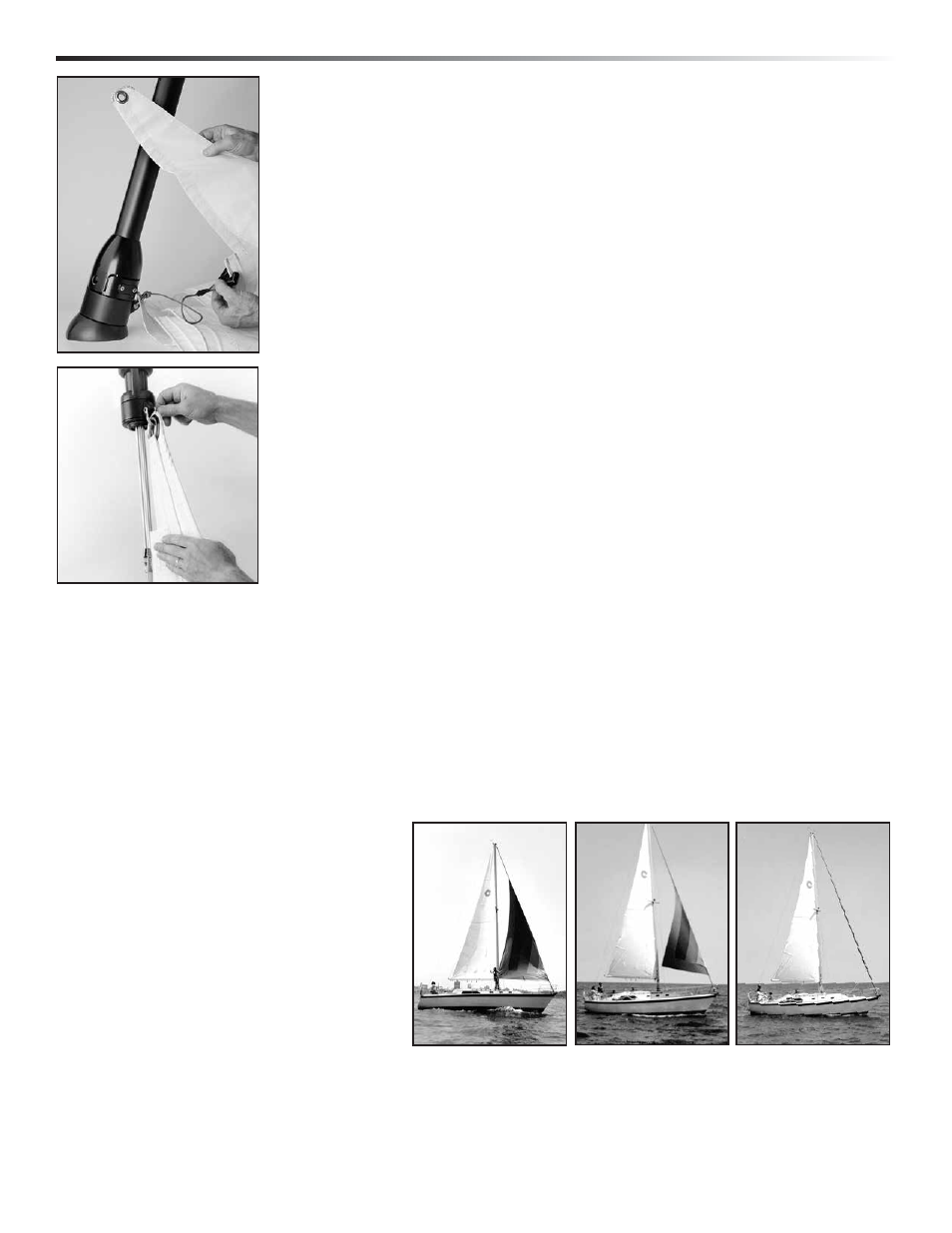Harken 7410.11 MKIV Jib Reefing & Furling User Manual
Page 32

32
MKIV Underdeck Unit 0
Furl and Reef
To furl or reef, ease the jib sheets and pull
furling line.
In very light air, it may be necessary to place
some tension on jib sheet to insure a tight furl.
In a breeze, you must completely luff sail by
totally slacking jib sheets before furling.
The furling line should pull readily. The amount
of force required is related to amount of wind,
but unit should never require use of a winch
to furl. If the sail will not furl, or if furling
requires a great deal of effort, there is a problem with system. Consult the Troubleshooting Guide on page 35.
Do not use a winch to force a system to turn. If you are certain that the system is operating properly, you may
use a winch to make furling easier.
Raise Sails
1) Install prefeeder by securely tying end of line to a deck fitting or to
toggle below furler so it is 2' (610 mm) below feeder.
2) Shackle tack of sail to tack shackle. Install shackle so screw pin head
is on same side as sun cover.
3) Secure genoa sheets to clew of sail.
4) Attach genoa halyard to halyard swivel.
5) Pass luff tape through prefeeder and feeder into foil groove.
6) Attach head of sail or pendant at head of sail to halyard swivel.
7) Hoist sail.
Tip: New sails are often stiff and may hang up on prefeeder during
raising. Do not force sail when it hangs up—lower and remove
twist. Sails "break in" with use and will become easier to raise.
Storm Sails
Most people will use one multipurpose genoa for all their sailing, but it is not good seamanship to go offshore
without storm sails.
Heavy-air working jibs and storm sails may be used with your unit. These sails need to have luff tape added to
allow them to be raised in headstay foils.
These sails will generally require pendants to ensure that halyard swivel is properly positioned at top of headstay.
See page 29.
Remember that heavy-air working jibs and storm jibs may be reefed and furled like any other sail.
Operation
Raise Sail/Storm Sail/Reef
